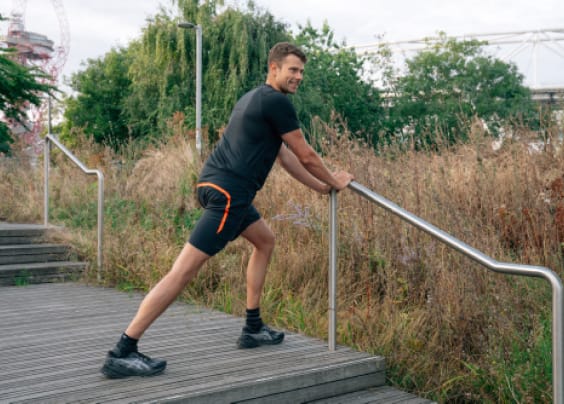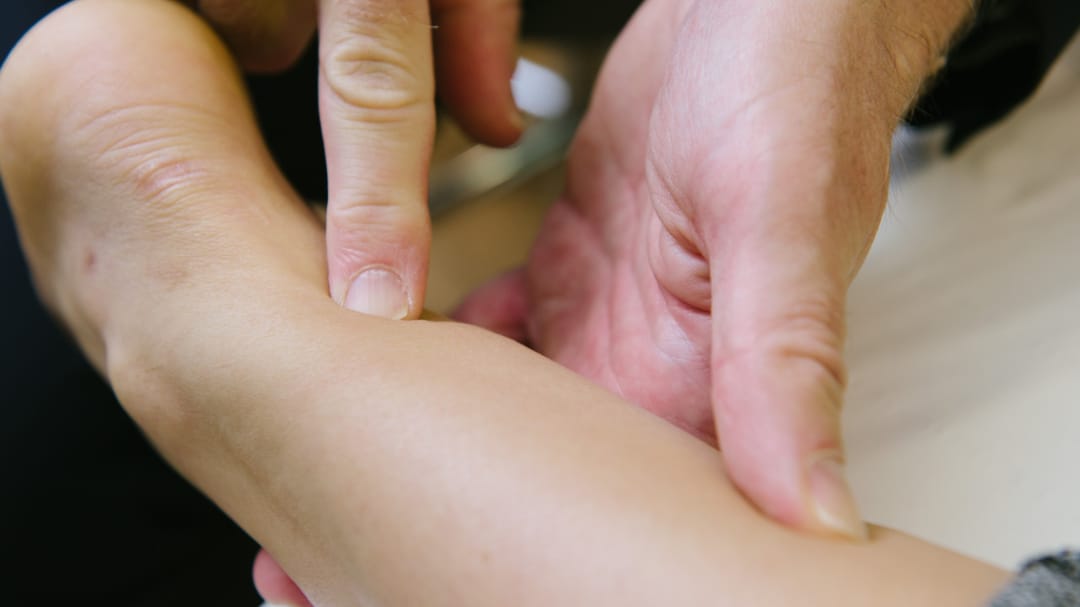The Concussion Blog – The Importance of an Active Recovery Following Concussion

Claire Small
Chief Clinical Officer & Consultant Physiotherapist
- 21 September, 2018
- Concussion Clinic
- 5 min read
Welcome back to our second blog on concussion management in the sporting context.

This week we’re going to consider the findings of a literature review by Leddy et al, 2016. Leddy and his team from Buffalo looked at how exercise in the initial recovery phase of concussion impacted on athlete health.
Leddy J, Hinds A, Sirica D, Willer B. The Role of Controlled Exercise in Concussion Management. PM&R. 2016 Mar;8:S91-S100.
Early application of exercise following a concussion (2-3 days post) is something that is becoming more commonplace in concussion rehab due to a variety of beneficial factors and the lack of evidence against. Leddy and his team used MEDLINE and PubMed to search for articles including terms related to concussion, post concussive syndrome, mild TBI, aerobic exercise and brain function. From their results they were able to break their reports in to ‘Physiology of concussion’, ‘Exercise effects on the brain’, ‘Exercise effects on the concussed brain’, ‘Effects of exercise in concussion management’ and ‘Treatment with sub threshold exercise’.
Physiology of Concussion
Bear with me for this section, it is the longest, but a good understanding of the physiology of concussion can help a lot when considering diagnosis and treatment options.
Concussion is a functional rather than structural injury, which is why conventional (structural) MRI, while useful for ruling out more serious pathology, doesn’t help us in the diagnosis or monitoring of concussion. The role of functional MRI is becoming better understood in concussion management but it’s not commonplace at present.
So, from a brain physiology point of view, concussion can be thought of through two main mechanisms. Firstly, the deregulation of ion channels of the neurones and secondly the disruption of normal brain stem function.
The deregulation of ion channels in the brain coupled with altered cerebral blood flow (CBF) is known as ‘Energy Crisis’. Following a concussive injury a release of potassium and influx of calcium and sodium occurs within the neurone ion pumps. As well as causing rapid glycogen metabolism, this influx of calcium causes a reduction in CBF resulting in an energy deficiency in the brain and hence the Energy Crisis.
Although 80-90% of concussions are thought to resolve within 7-10 days, research has shown that the reduction in CBF may last for up to a month in adults and even longer in paediatric patients (4,5). This is something we obviously need to consider during return to play as a second insult on a recovering brain will lead to a longer injury period.
As mentioned, the brain stem is also acting on brain physiology. We know the brain stem is responsible for the autonomic regulation of heart rate and blood pressure as well as coordination of the MSK system. Leddy and his team focus on autonomic regulation and the role of the brain stem in monitoring arterial carbon dioxide (Paco2). In ‘normal’ subjects a depressed Paco2 reduces CBF and conversely, increased Paco2 increases CBF with Paco2 inversely proportional to pulmonary ventilation- so the higher the arterial Co2 the more blood to the brain and the harder the lungs work getting O2 in to the blood. This compensatory hyperventilation is called the ‘ventilation threshold’ and is guided by the body’s Co2 sensitivity. A recent study(1) of concussed females showed Co2 sensitivity to be altered leading to hypoventilation during exercise, raising Co2 levels out of proportion to exercise intensity. This caused subsequent increase in CBF and it is this failed mechanism that is thought to contribute to dizziness and headaches.
Exercise effects on the brain
Aerobic exercise increases neuroplasticity and has been shown to increased cortical connectivity and activation on functional MRI. We know there is neuronal tearing during concussion leading to connectivity changes. Vestibular and oculomotor pathology also benefit from brain plasticity in repairing their systems.
In a separate study(3) Leddy demonstrated through functional MRI that sub threshold aerobic exercise restores brain activation patterns to normal and in doing so cuts the high metabolic activity during cognitive tasks that lead to high levels of fatigue in concussed patients.
Role of exercise in concussion management
There is seemingly an ever-growing list of reasons we should be using exercise in the rehabilitation of concussed athletes. Anyone that has rehabbed an athlete regardless of the injury will know that they hate to be inactive. Wise et al, 2012 found that athletes that exercise following concussion are less depressed and report better health status than those that don’t(6). Associated health conditions such as vestibular dysfunction have also been shown to be prolonged in sedentary patients. One of the treatments for vestibular dysfunction is accommodation exercises which help to promote plasticity in the brain by provoking symptoms through movement. The sedentary athlete wont be getting this stimulus.
Buffalo Concussion Treadmill Test
Leddy also discussed previous research of his own.
This next piece is practically very useful and is a great starting point for any athletes with post concussion syndrome that are struggling to get past the aerobic exercise stage of their RTP.
This tests aims to establish the exercise intensity that a patient can tolerate without exacerbating their symptoms with the aim of increasing the intensity in a step-wise progression:
- Starting speed is 3.2-3.6 mph at 0% incline.
- Incline increased by 1% at minute 2 and by 1% each minute at same speed
- Exercise stopped at the predetermined criterion of symptom exacerbation
- HR recorded at the threshold of symptom exacerbation forms the basis for the individualized exercise prescription
Treatment protocol
- Patients given prescription for aerobic exercise (stationary bike initially)
- 20 minutes per day
- Intensity of 80% (90% in elite athletes) of threshold HR achieved on the BCTT
- Once per day, 5 to 6 days per week using an HR monitor
- Terminate exercise at first sign of symptom or after 20 minutes, which ever comes first
- BCTT repeated every 2-3 weeks to establish a new target HR until symptoms are no longer exacerbated on the treadmill.
This is a great article to understand the brain physiology behind concussion and it demonstrates the importance of an active recovery! I think as clinicians we are worried about stirring up symptoms during rehab but it’s important to remember that symptoms are transient and exercise induced headache are unlikely to effect the long term outcome of a concussion, as long as it’s not happening regularly.
The main points to take from this paper are the knowledge that CBF and concussion symptoms don’t resolve at the same time, that we can reduce the high levels of mental fatigue through exercise in prolonged concussions and the BCTT can act as a useful tool in improving exercise capacity of the concussed athlete. That said, the BCTT could be taken further with the next steps potentially measuring CBF with Doppler or using blood lactate assessment. I think in elite sport we should also be repeating the BCTT more than every 2-3 weeks!
Stay in touch:
Twitter: @Theo_Farley
Email: [email protected]
If you’d like book an appointment with Theo follow the link or contact or Kensington clinic.
References
1. Clausen M, Pendergast DR, Willer B, Leddy J. Cerebral blood flow during treadmill exercise is a marker of physiological postconcussion syndrome in female athletes, J Head Trauma Rehabil, June 19, 2015.
2. Leddy, Kozlowski, Donnelly, D.R. Pendergast, L.H. Epstein, B. Willer. A preliminary study of subsymptom threshold exercise training fo refractory post-concussion syndrome. Clin J Sport Med, 20 (2010), pp. 21–27
3. Leddy, Cox, Baker. Exercise treatment for post concussion syndrome: A pilot study of changes in functional magnetic resonance imaging activation, physiology, and symptoms J Head Trauma Rehabilitation, 28 2013, 241–249
4. Meier, Bellgowan, Singh, Kuplicki, Polanski, Mayer. Recovery of cerebral blood flow following sports-related concussion. JAMA Neurol. 2015 May;72(5):530-8
5. Silverberg, Iverson. Is rest after concussion “the best medicine?”: Recommendations for activity resumption following concussion in athletes, civilians, and military service members J Head Trauma Rehabil, 28 2013, 250–259
6. Wise, Hoffman, Powell, Bombardier, Bell Benefits of exercise maintenance after traumatic brain injury Arch Phys Med Rehabil, 93 2012, 1319–132

Advice
Over the last 20+ years our experts have helped more than 100,000 patients, but we don’t stop there. We also like to share our knowledge and insight to help people lead healthier lives, and here you will find our extensive library of advice on a variety of topics to help you do the same.
OUR ADVICE HUBS See all Advice Hubs

